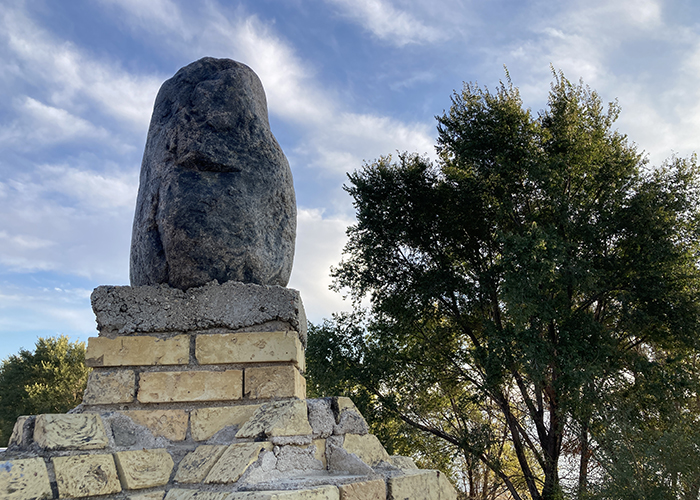 Previous Day |
Bismarck, ND → Fort Yates, ND → Bismarck, ND 134.2 mi (216.0 km) |
 More 2022 Adventures |
Háu, everyone!
I’ll bet you’ve heard that greeting before! “Háu” is probably one of the most widely recognized Native words out there, thanks to Hollywood, but it originated among the Great Sioux Nation! Once roaming the Great Plains from the Tetons to the Mississippi River, the Sioux are still represented by over 30,000 speakers, some of whom live in a reservation about an hour south of Bismarck. That reservation is called Standing Rock, and that’s where I plan to start off this Indigenous Peoples’ Day!
If you were paying attention to the news back in 2016, Standing Rock Reservation was the site of massive protests against the building of an oil pipeline under the Missouri River half a mile from the reservation. For the first time, non-Sioux folks heard the term Mní Wičóni (“Water is life”), even though they knew about Mní Sóta, the clear-watered 32nd state of the Union!
 |
The reservation gets its name from Inyan Bosdata, the Rock-standing-on-end! Carried from place to place for many years, this stone also carries many origin stories, each referring to a woman separated from her tribe who turned to stone! After the reservation was set aside, Chief Sitting Bull held a council to place the stone permanently here on the banks of the Missouri River, and the monument was installed on November 6, 1886! There were quite a few cigarettes discarded on the base, which at first I thought was rude, but then I remembered that tobacco has been an important offering gift since time immemorial! I activated the Flutter Phone for a better look!
Fort Yates was the original burial site of Tatanka Iyotake, or “Sitting Bull,” the accomplished Hunkpapa Lakota chief who trounced Custer in the Battle of the Greasy Grass and who would go on to tour the country with Buffalo Bill’s Wild West Show. Sadly, he was shot by the agents who came to arrest him in 1890 for supporting the Ghost Dance. He was originally buried here in Fort Yates, but his remains have been taken to Mobridge, South Dakota, where there is another monument for him.
 |
The Fort Yates visitor center was closed today, so I began my return north to catch my evening flights back to LA. Along the way, I stopped off at Fort Rice State Historic Site!
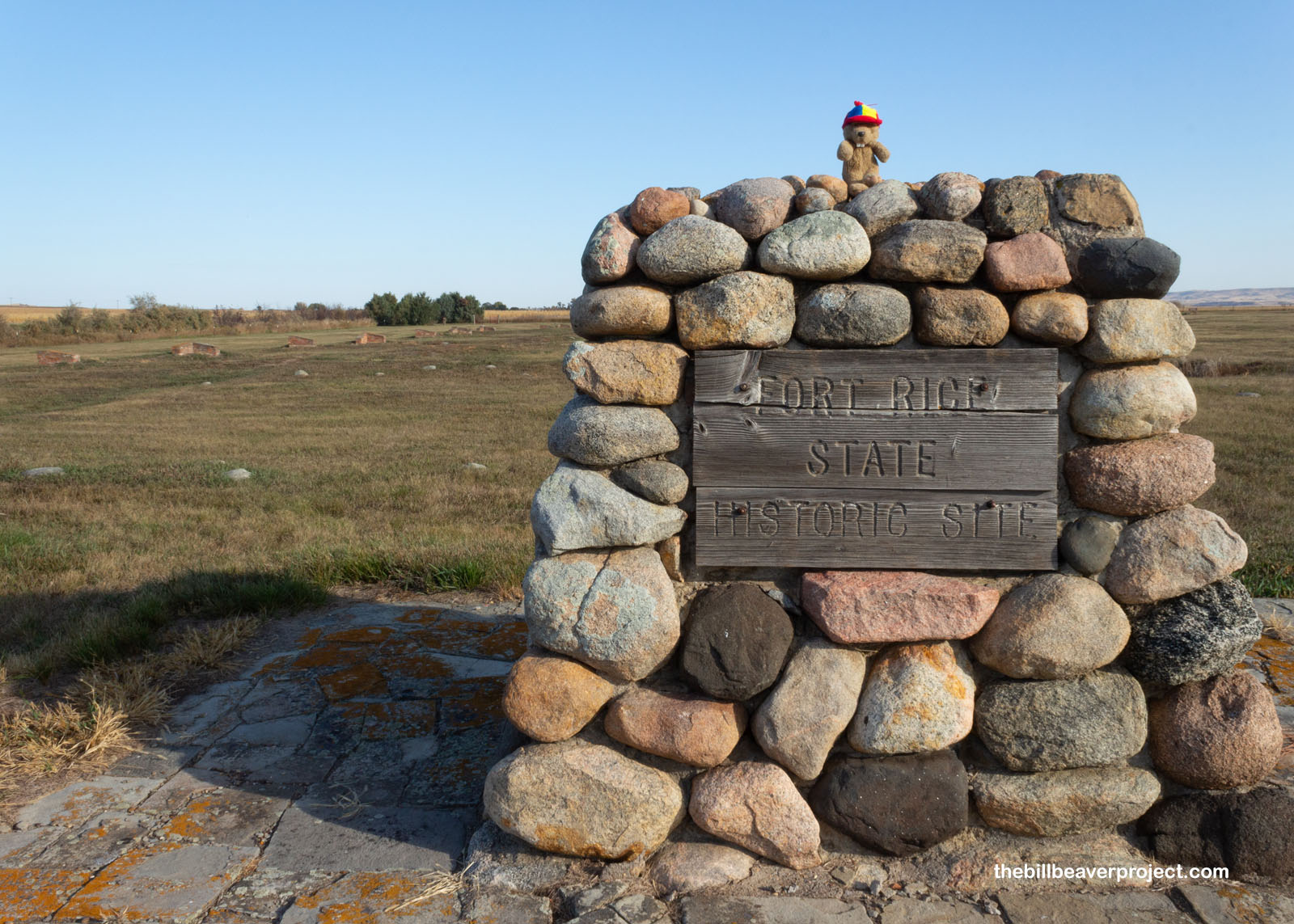 |
Fort Rice was the first of many forts installed to guard transportation routes in the area, founded on July 7, 1864, eight years before the railroads fatefully arrived at Camp Hancock in Bismarck! It was the base of operations for General Alfred H. Sully in his campaigns to force the Sioux onto their reservations, and it was also the site where the area’s Sioux leaders signed the Treaty of Fort Laramie in 1868.
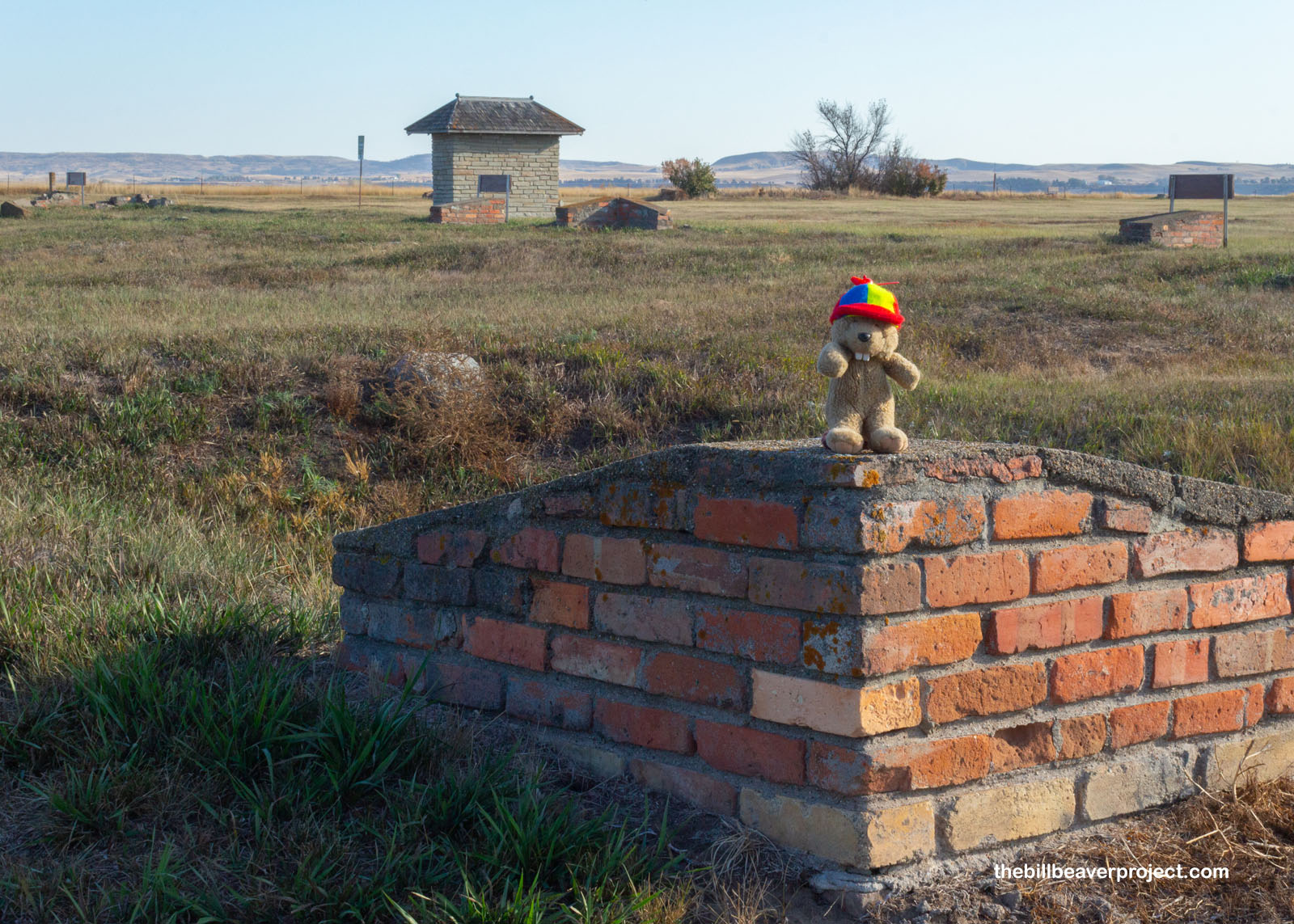 |
The residents here had lots on their minds! They were remote and isolated, and 74 men died of disease in the first year (6 in combat)! So while today, there isn’t much to see but foundations, at its height (ten feet being the precise height of the stockade), Fort Rice housed a library, a bakery, and a theater!
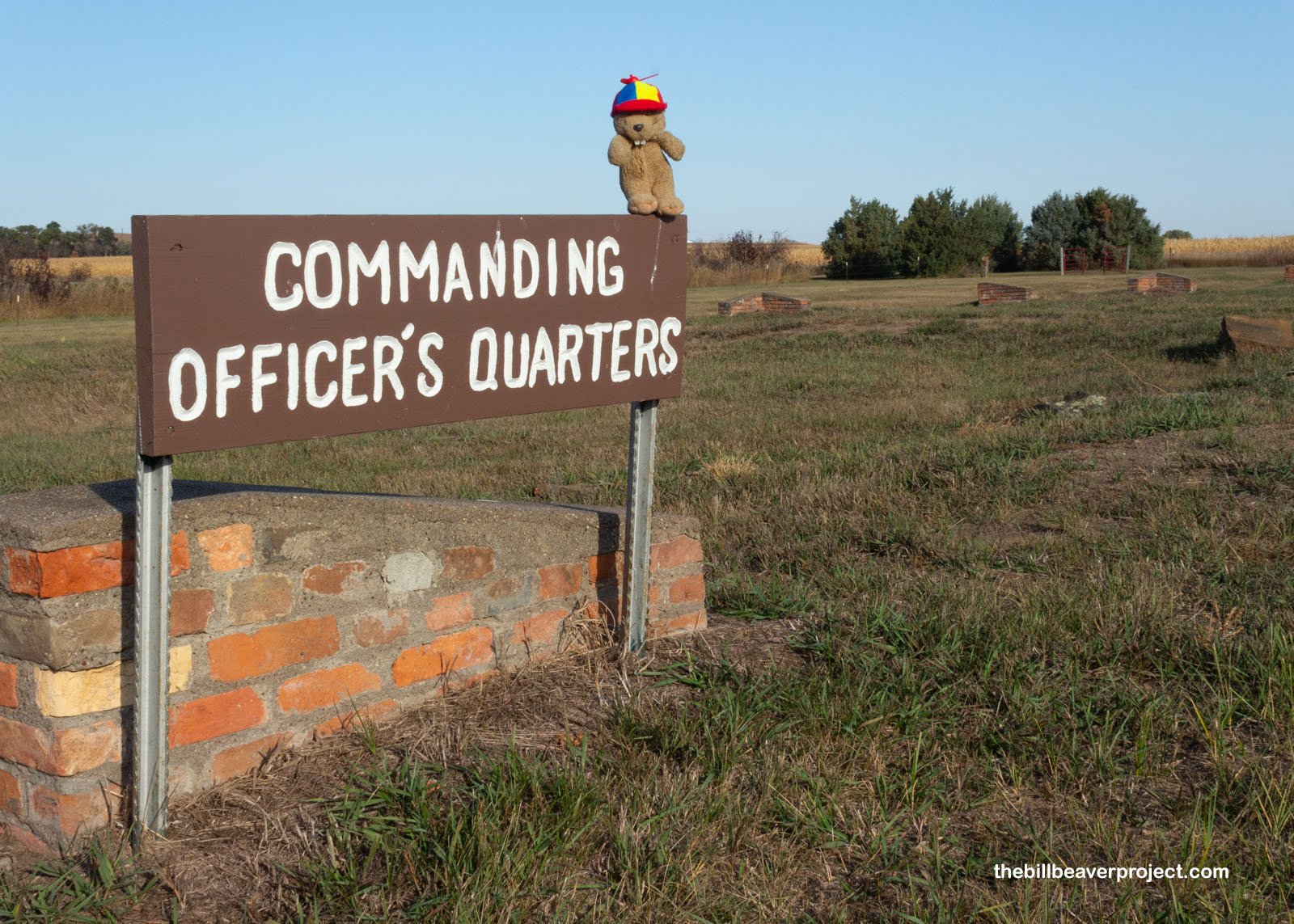 |
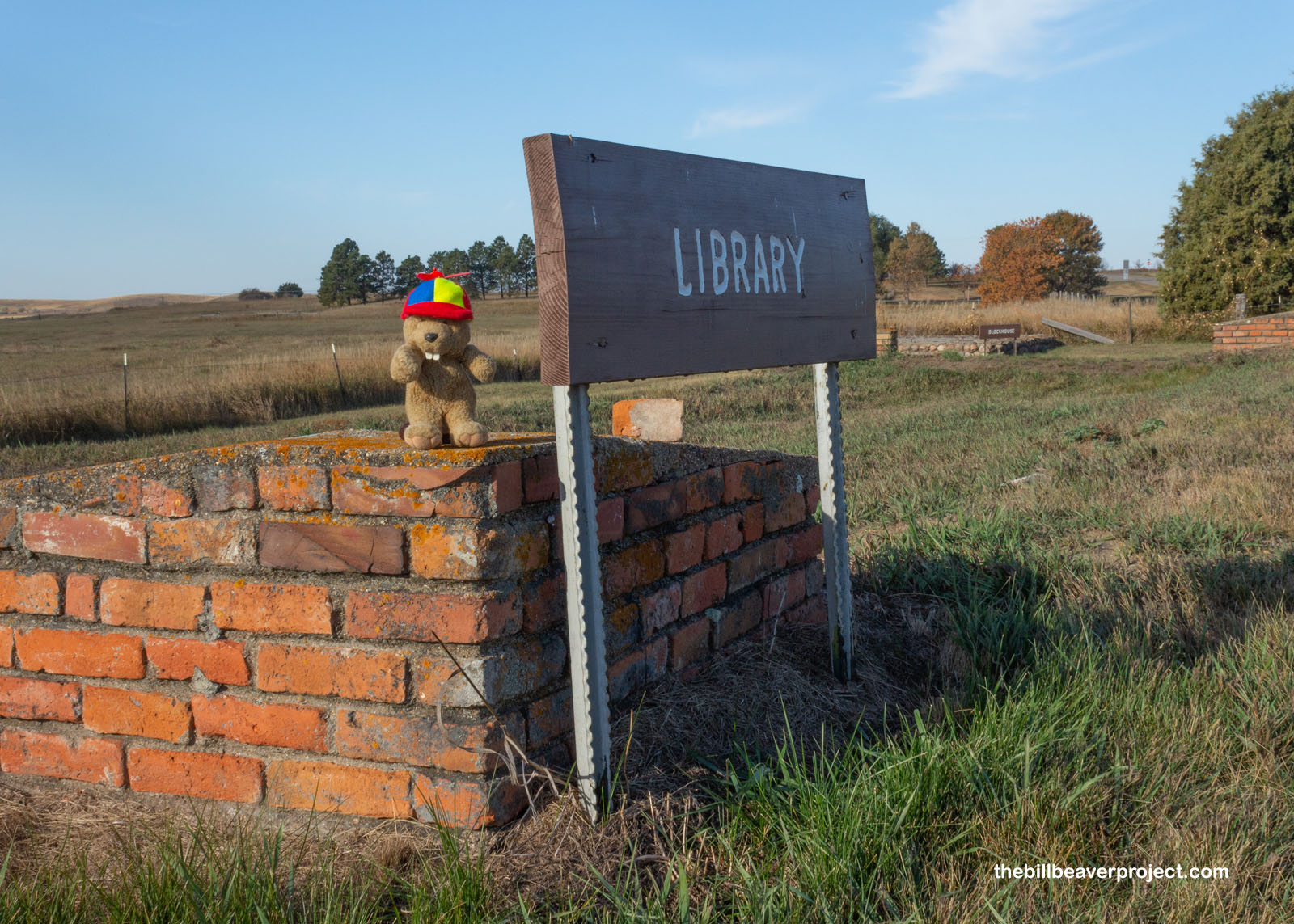 |
But Fort Rice was far from the first fortified settlement in the area! Upriver, the ancestors of the Mandan had a well-planned town that probably housed over a thousand residents! Today, we call this the Huff Indian Village after the nearby town of Huff, North Dakota! I thought this would be a good site to wrap up Indigenous Peoples’ Day!
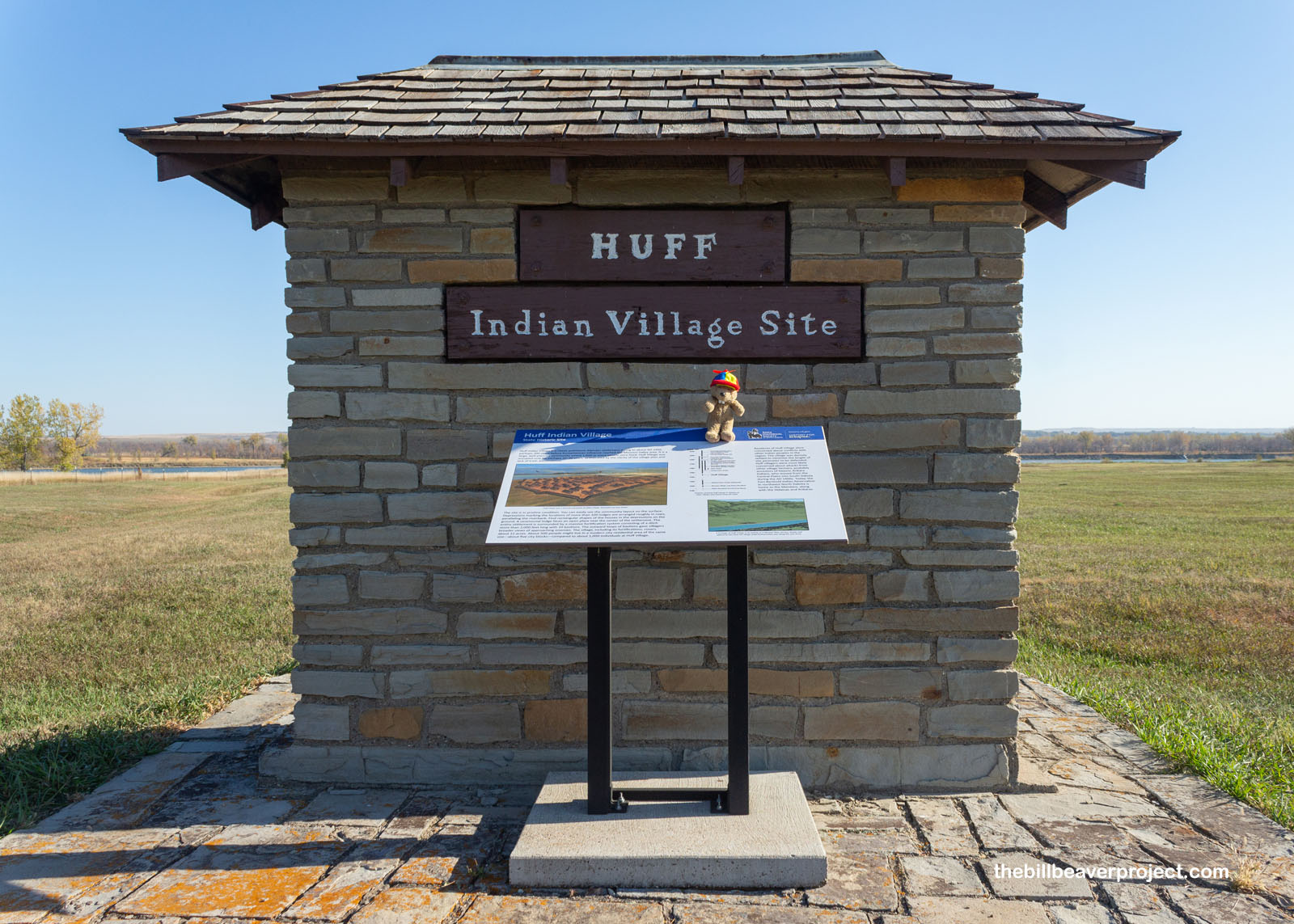 |
This 12-acre community arose around 1450 CE with over a hundred houses neatly organized in rows, facing southwest. It’s been mostly undisturbed, thanks to efforts by the US Army Corps of Engineers stabilizing the riverbank. This town probably wasn’t occupied more than 20 or 30 years, based on the lack of trash, which probably had something to do with the huge wall that once surrounded the town (kind of like at Double Ditch)!
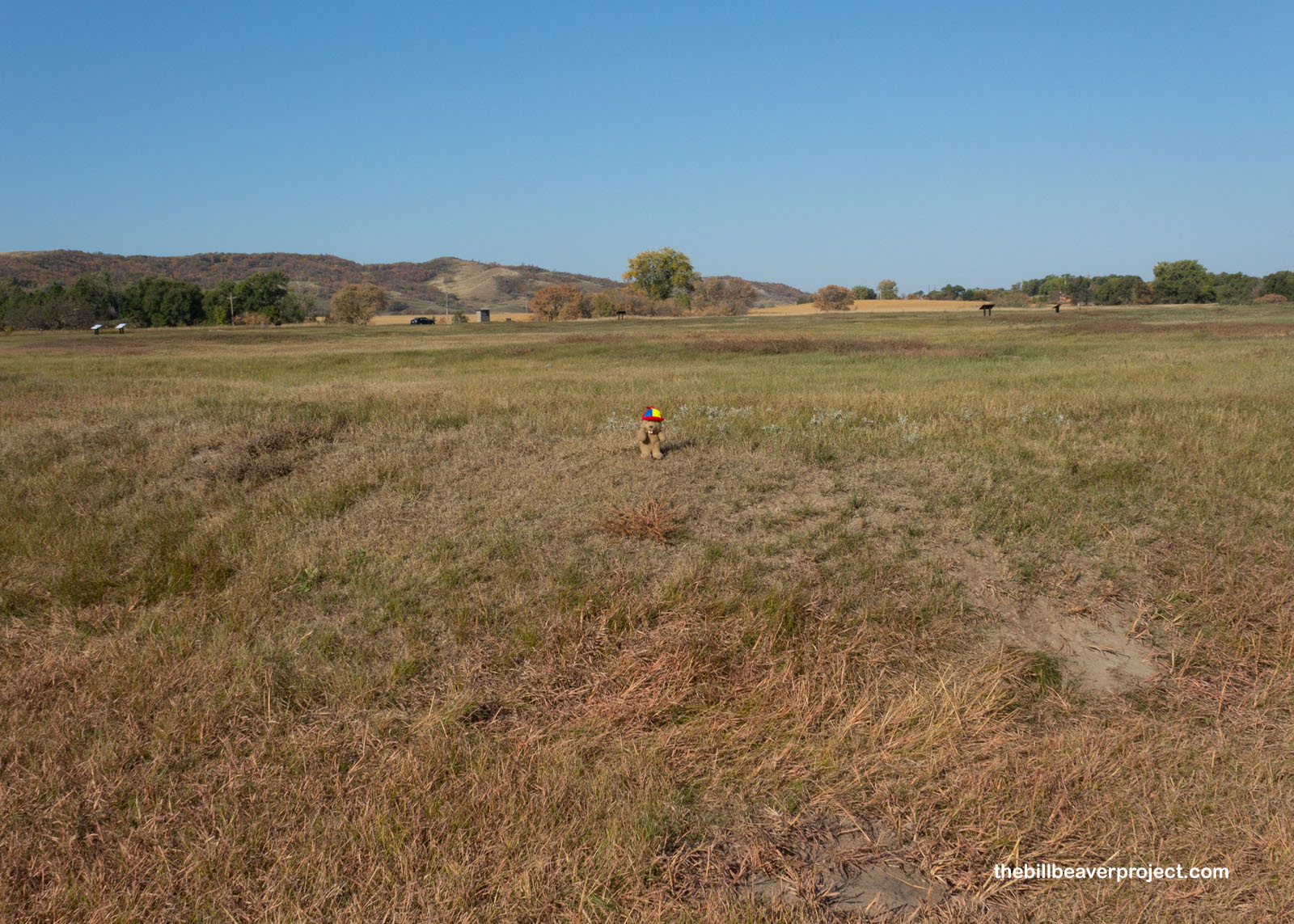 |
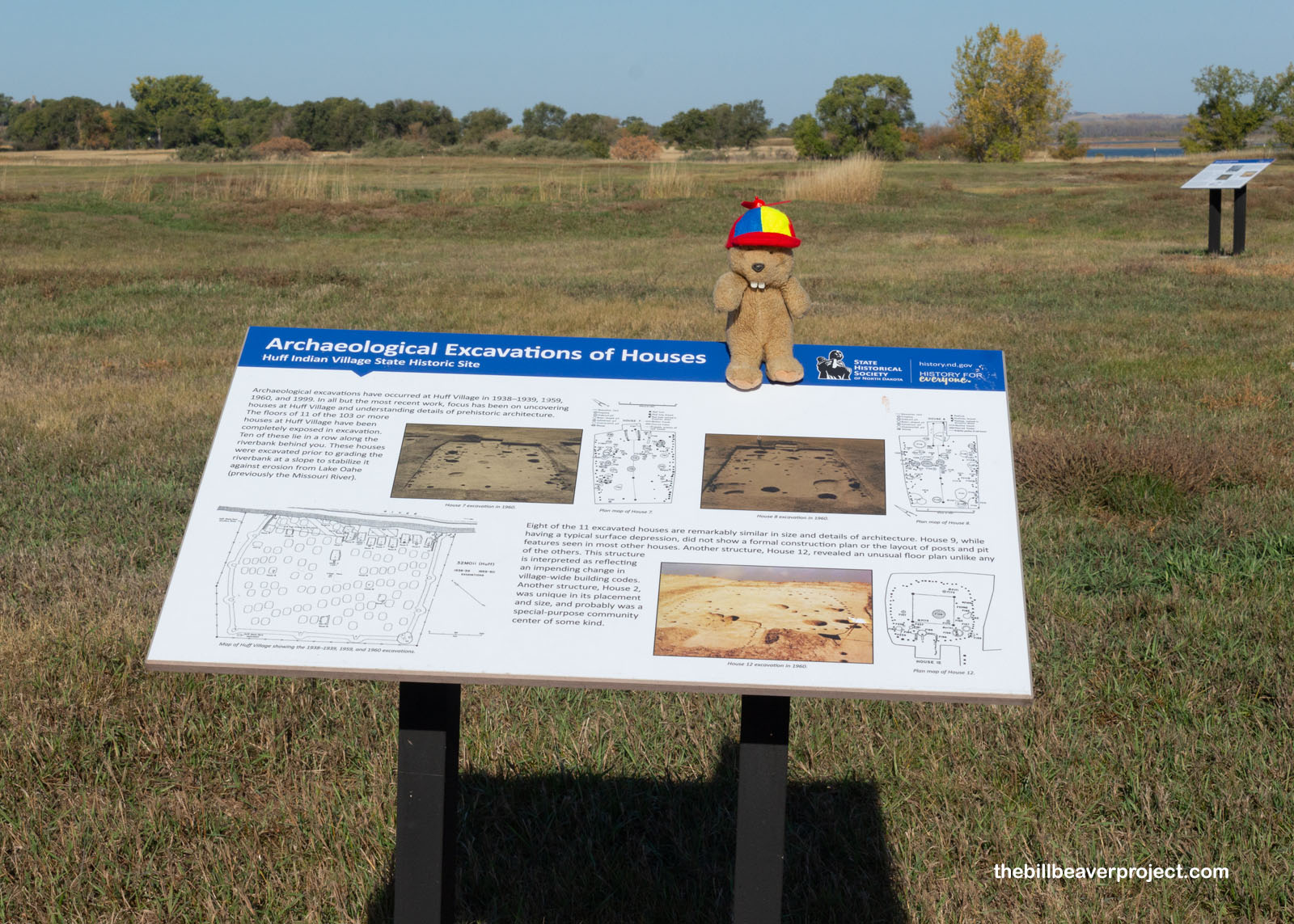 |
There wasn’t much to see from my vantage point, but from above, the outlines of the 1-2-foot deep foundations still show the town’s layout. Smack dab in the midst of the residences was a plaza and a large ceremonial lodge, which was both a sacred space and a residence, based on trash found inside!
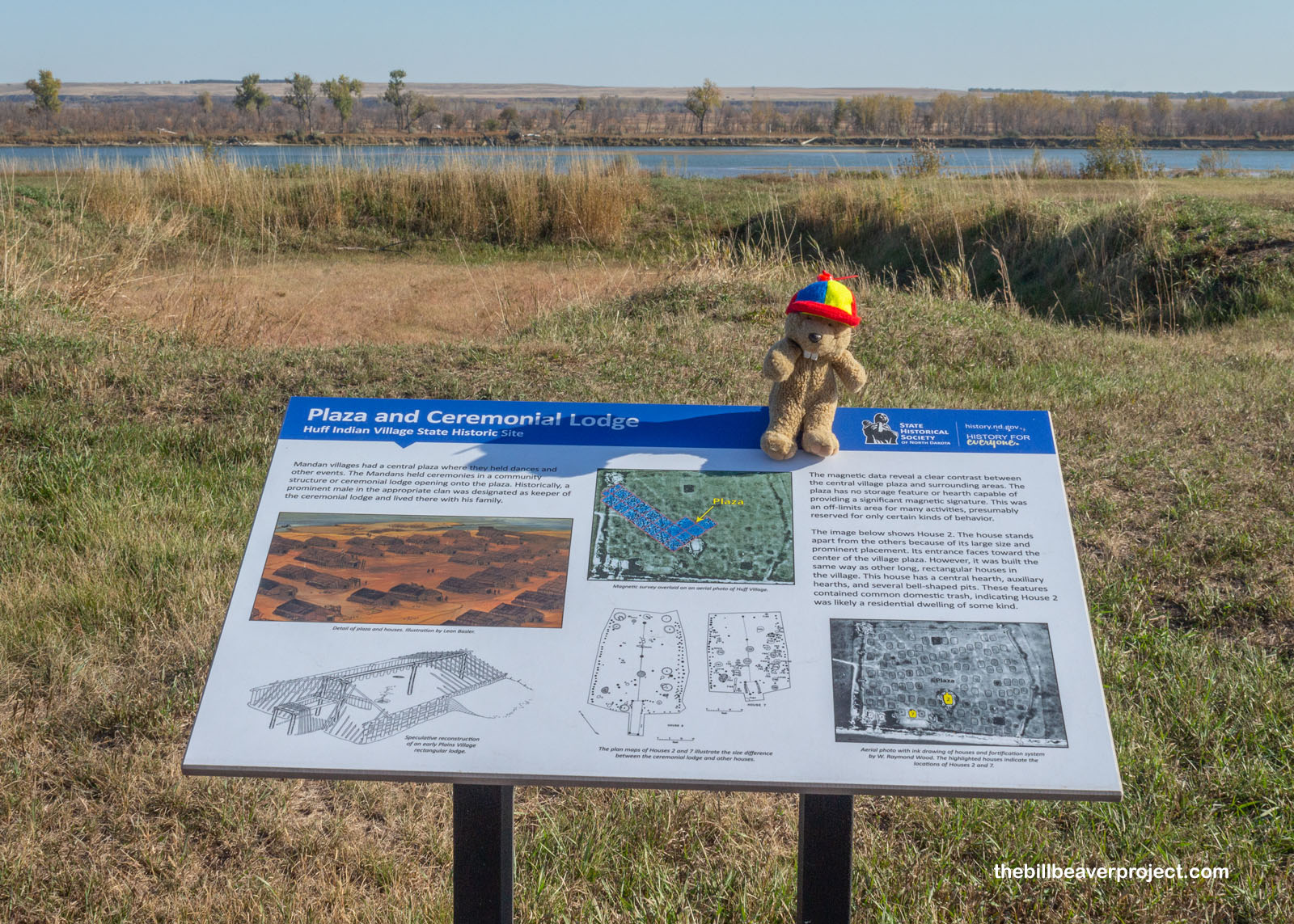 |
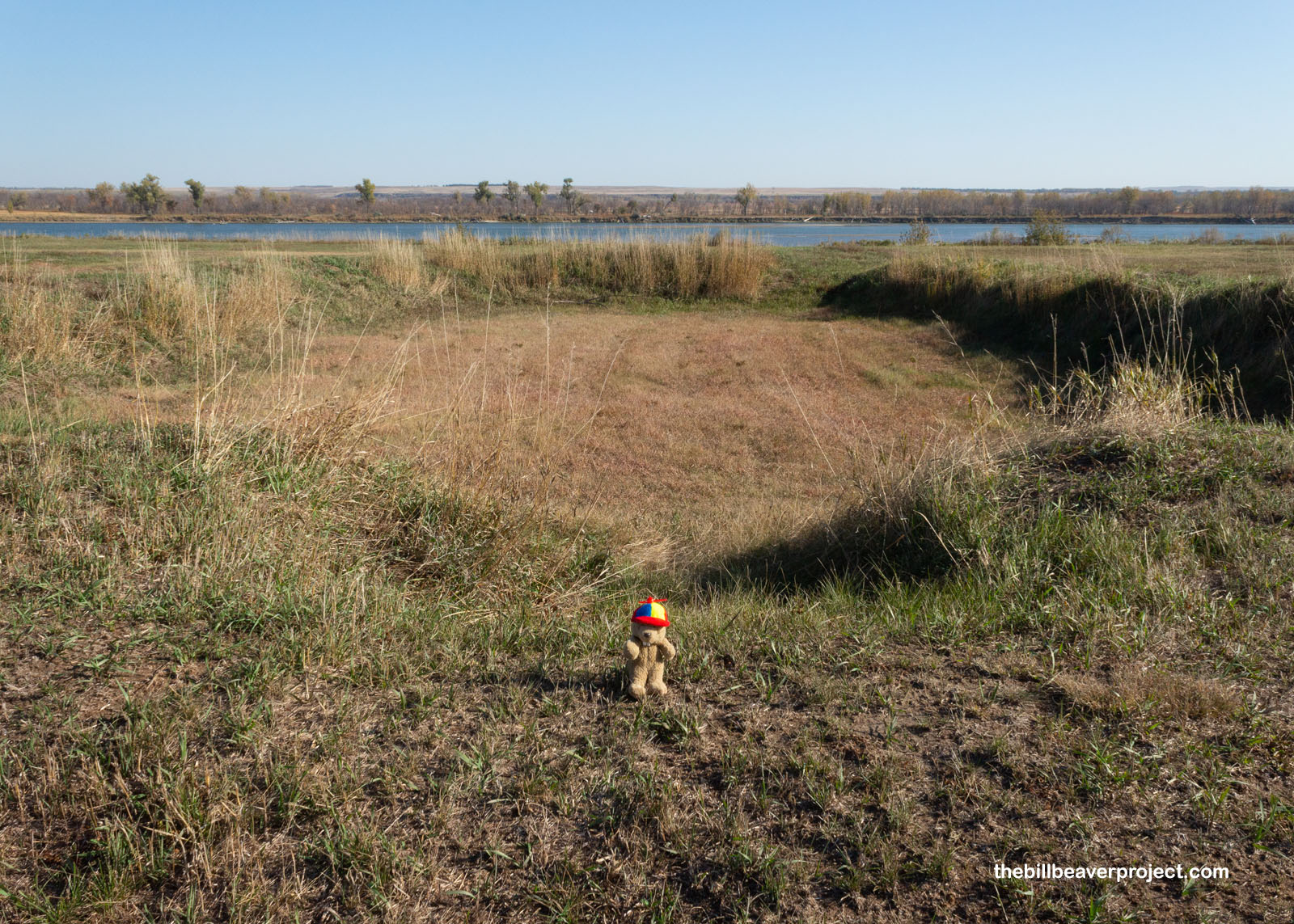 |
And just like that, my time in North Dakota was up! I bid farewell to the Huff Indian Village and returned to the wonderfully small airport in Bismarck for my two-part return to Los Angeles! I’m glad I got to experience this less visited state while the weather was so nice, and I hope to make more such adventures very soon!
Aŋpétu wašté yuhá po!

 Previous Day |
Total Ground Covered: 686.5 mi (1,104.8 km) |
 More 2022 Adventures |
